Imperial Heraldry Part 2: patterns & custom transfer decals
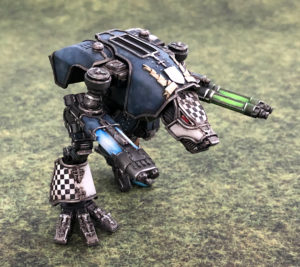
Check out part 1 for tips on painting stripes or patterns with tape and putty masking.
Here in part 2, we will look at applying more complicated patterns by creating your own custom transfer decals, and then take a look at how the final results come together in a finished product.
Custom Decals
What GW kit would be complete without decals? The problem is, GW only produces decals for some of their models – what happens when you want decals for a chapter or house that GW doesn’t recognize? Such was the issue for my Legio Tempestus titans (and my House Griffith Knights, and my Raven Guard space marines, etc etc). You can either hope to find an expensive Forgeworld sheet of decals, or you can try printing your own with your home printer.
Printing Your Own Decals
Note: for reliable results at this scale, you need to use a laser printer for creating decal sheets. If you don’t own a laser printer, you can take your designs to a local print shop. For under $20 from your favorite online retail leviathan, you can buy a pack of 20 blank decal sheets, either white-backed or clear-backed. The main consideration for using each is whether or not you are involving white in your pattern since it’s not currently possible to print in white ink (at least not with commonly available and affordable printers). I’ll show you one example of using white with clear-backed decals, and another using white with white-backed decals.
Checkered Pattern
Custom decals are a great way to make patterns that are too complex for tape masks; specifically, checkered patterns that are found in many Titan Legions and Imperial Knights (as well as Harlequins, Orks, etc). You can either find a ready-made pattern online, or create your own simple checkered pattern in your favorite image editing program. Printing out a sheet on transparent decal paper will allow you to make checkmarks in all sorts of colors. If you happen to have a colored laser printer, the options are endless. For Legio Tempestus, I’m applying over a white base coat. For the Legio Mortis, I’m offsetting the same checkered pattern at an angle to appear more like diamonds; against the red basecoat gives an entirely different look from the Legio Tempestus patterns.
Applying the Pattern
Since I’m all about saving time and cutting corners, I cut out large sections of checkers and applied them to the model with a large overlap of decal with the intention of shaving the decals down to size after the fact. However, some of you may not be comfortable using a knife on your painted miniatures. If instead, you wanted to take the time and effort to trace and cut out exact shapes for your decals, you can skip the Shaving step below. For me, tracing and cutting out the exact shapes would be incredibly time consuming and could lead to a lot of frustration and mistakes, which more than makes up for any risks using a knife.
Micro Set and Micro Sol are invaluable tools for applying decals. Micro Set saves frustration for possible application mistakes, and Micro Sol makes it possible to form-fit decals over curved and uneven surface. I use both liberally here. Apply the Micro Sol, set the decal roughly where you want it to go (leaving a large ‘extra’ amount around the decal), then apply more Micro Set on top. Every 20 minutes or so, apply Micro Sol onto the surface of the decal and work it with a stiff-bristled brush, especially into the corners where the decal will be cut off. You want the corners to be as form fit as possible.
Over some particularly irregular areas – like the Void Shield Generators on the back of the Warhound Titan, for example – you may need to make special cuts in the decal in order for it to lay flat.
Shaving the Decals
After giving the decals ample time to dry – overnight if possible – you’ll now shave off the extra amount. Use a brand new blade for this process. Gently – GENTLY– score the edges of the decal pattern with the new blade. It won’t take much pressure to work as needed. After it’s scored, grab onto the extra unused decal, and gently pull it off all around the pattern and discard. It may come off in strips, and you may find a tweezer tool useful in some areas. The result should look like a perfectly formed decal.
After you’ve removed the excess decal, use a couple of rounds of Micro Sol to make sure the freshly-cut edges are flat and affixed. Since this edge area is the most likely to be covered in your wash and shades later, it is somewhat forgiving if some of the edges aren’t perfect. Plus, you can always use a spot of paint here or there if the pattern was not cut perfectly.
Painting the Decal
Especially for larger pattern areas, like these checkered patterns, you will be applying the decals in the middle of the painting process and not just at the final details stage. This allows you to then apply shading and washes on top of them to further blend into the model.
Using Micro Sol once again, you can use your stiff-bristled brush to force the decal sheet into little recesses and grooves on the model. After you’re satisfied, apply a layer of varnish on top of the decal to protect it from whatever painting steps you’ll be using on top of the decals. For my Legio Tempestus Titans, I gloss varnished the entire model in preparation for the oil wash step. The goal is to make the decal indistinguishable from the rest of the surface for painting washes, shades, weathering, and other final details and highlights.
White Decals
An alternative method to apply white decals is to use white-backed transfer sheets. This can be a bit more complicated, since as mentioned previously it’s not currently practical to have access to white-ink printers. What you would need to do instead is to print the outline of the pattern you wish to display on white-backed transfer sheets and cut away the excess before you apply the decal. To illustrate what I mean, I’ll use the Raven Guard chapter symbol which is notoriously not readily available in GW space marine decal sheets. Using a custom graphic (credit to the online author), cutting around the edge of the black pattern as close as possible will allow you to apply this to a black armor plate. The trace edges of black remaining around and inside the decal will appear almost unnoticeable to the black of the armor basecoat. You can use this technique with any white pattern or icon that is being applied to a colored surface (you’d need a color printer for applying to non-black painted models)
Final Results
After the stripes, dazzle camo, and checkered pattern decals were applied, I covered each model in a gloss varnish. I then applied an oil wash (nothing beats an oil wash in my opinion!) and a final coat of matte varnish. After some final highlight details, this group is just about done. All that’s left now is some final weathering pigments and basing work. I may print out some custom Legio Tempestus decals and apply those as well. There’s plenty left to go, but my Adeptus Titanicus maniples are on their way to smashing each other to bits on the tabletop!
And remember, Frontline Gaming sells gaming products at a discount, every day in their webcart!

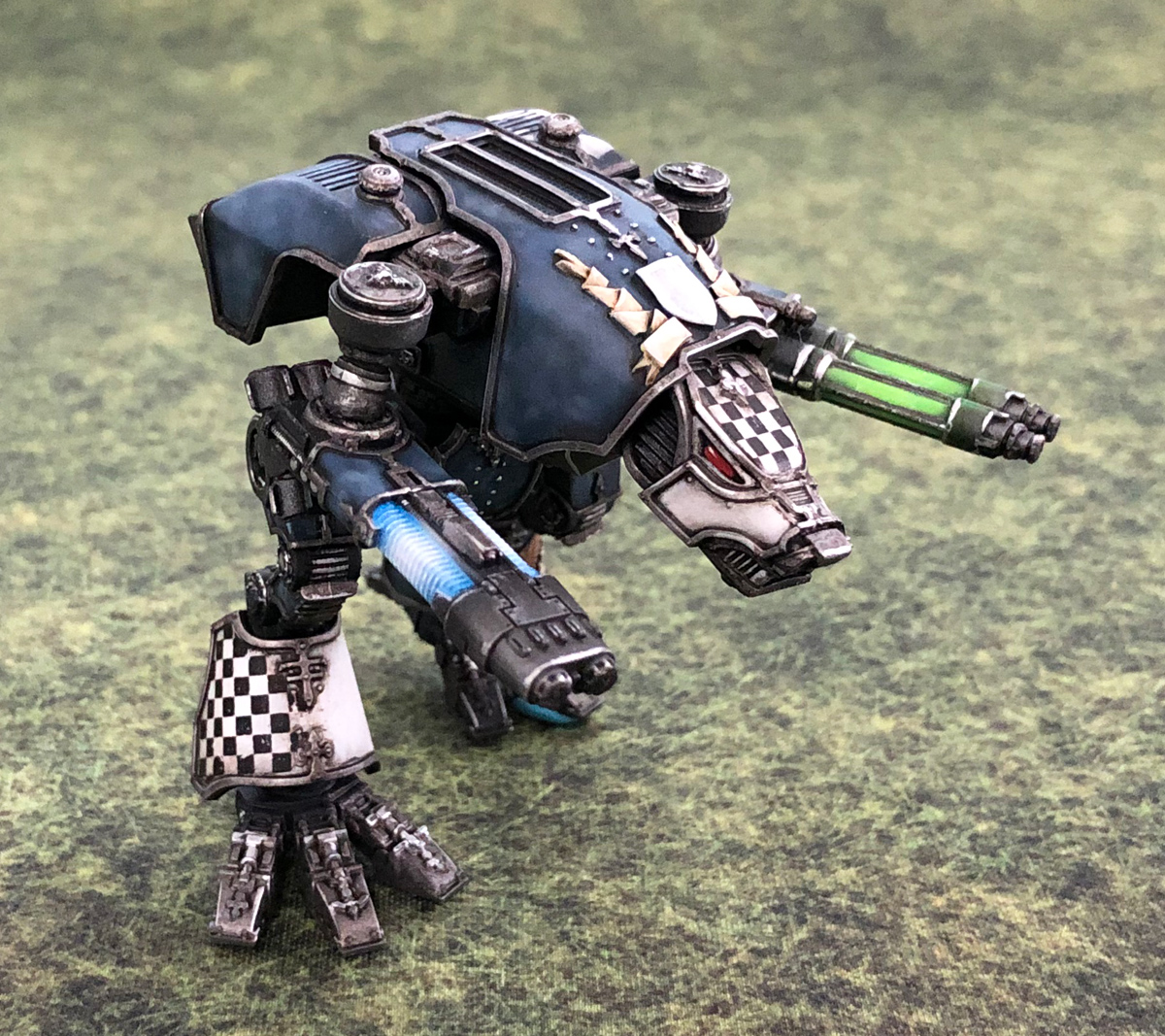
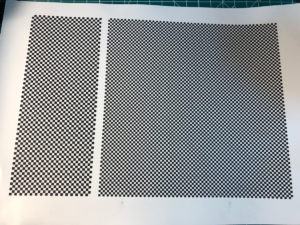
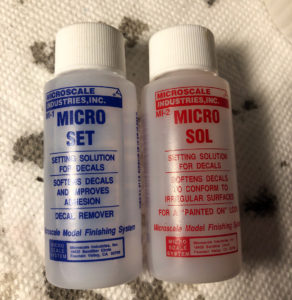
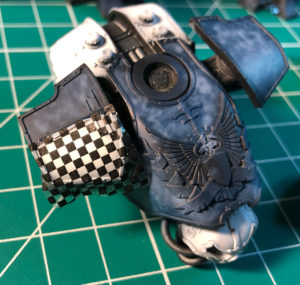
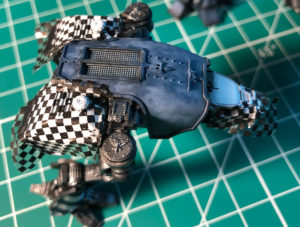
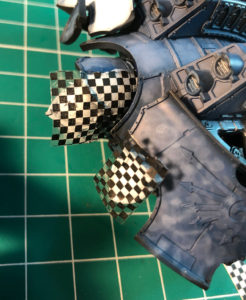
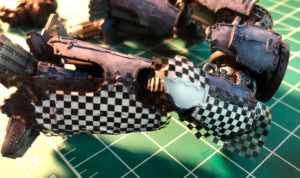
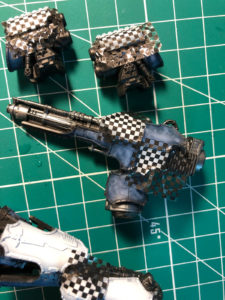
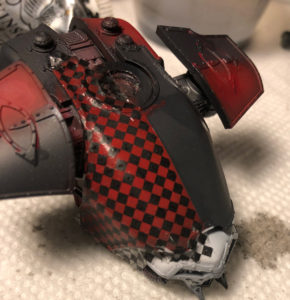
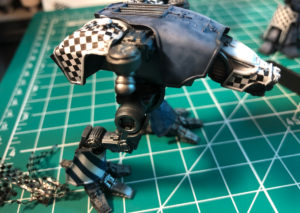
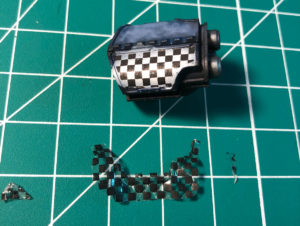
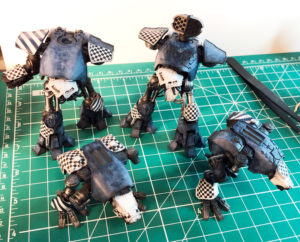
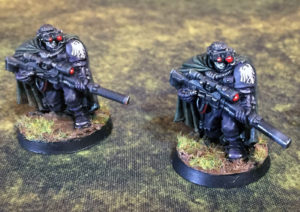
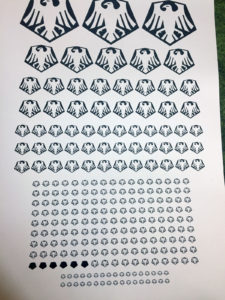
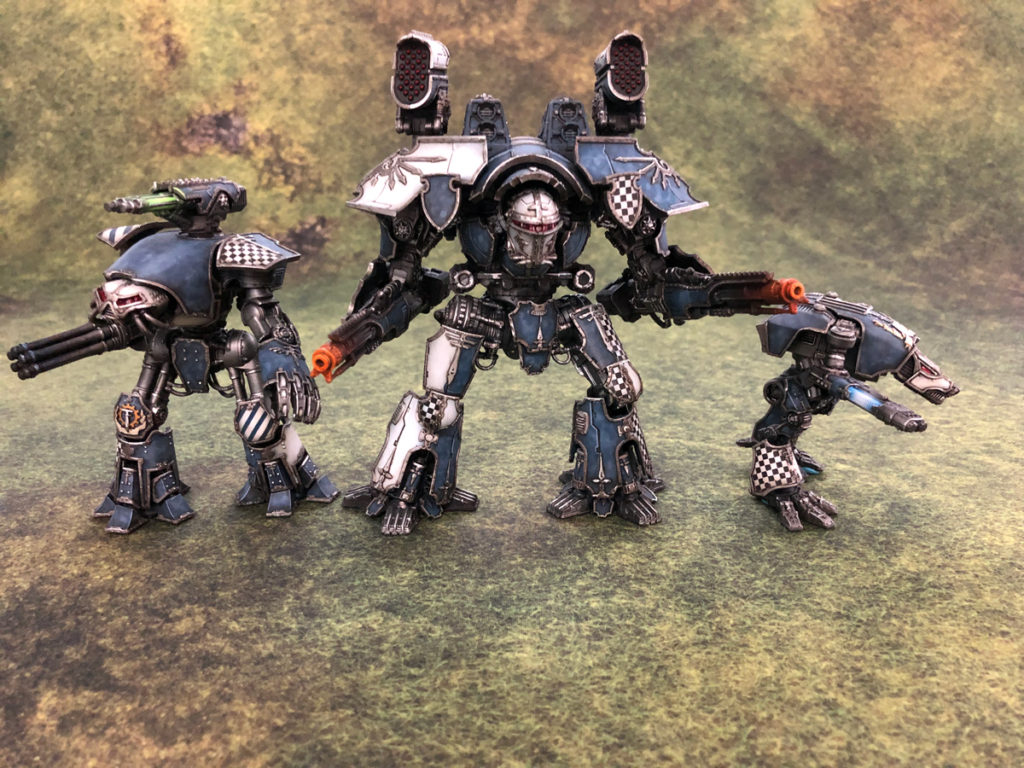
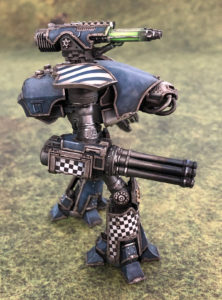
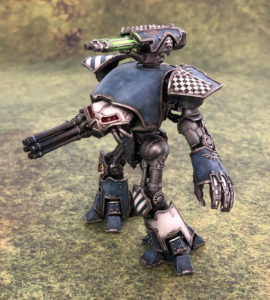
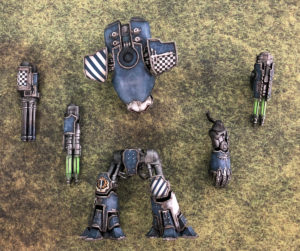
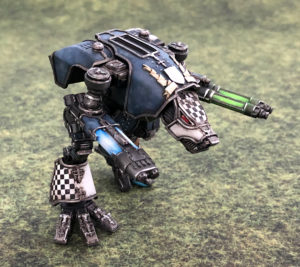
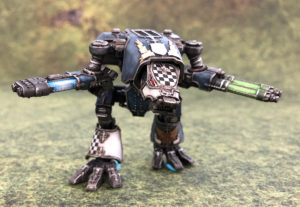
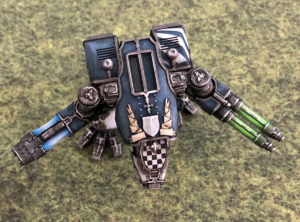
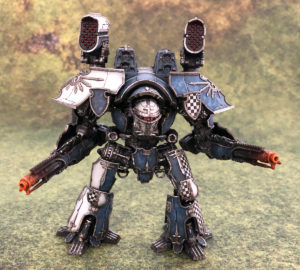
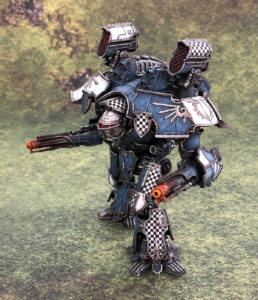
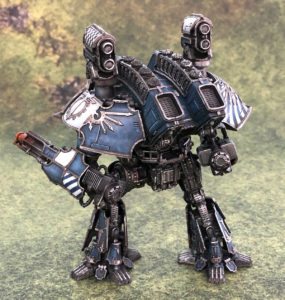
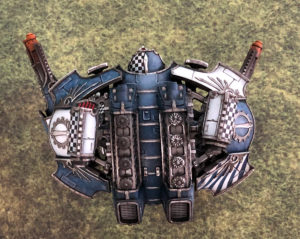
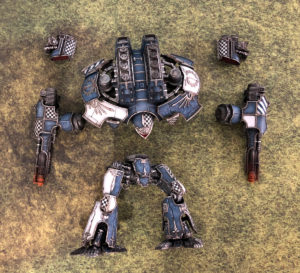
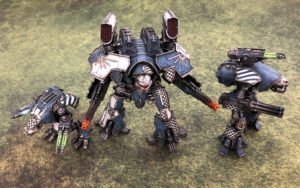


This is a great tutorial! perfect for those of us with home-brew chapters.
Yeah, these have been great!
That was great tuto!
It decides me to start legio tempestus army.
By chance, do you sell chessboard decals iwth the same size? I would be very glad to buy them from you directly instead of having to print them.
Kind regards,
Gilles